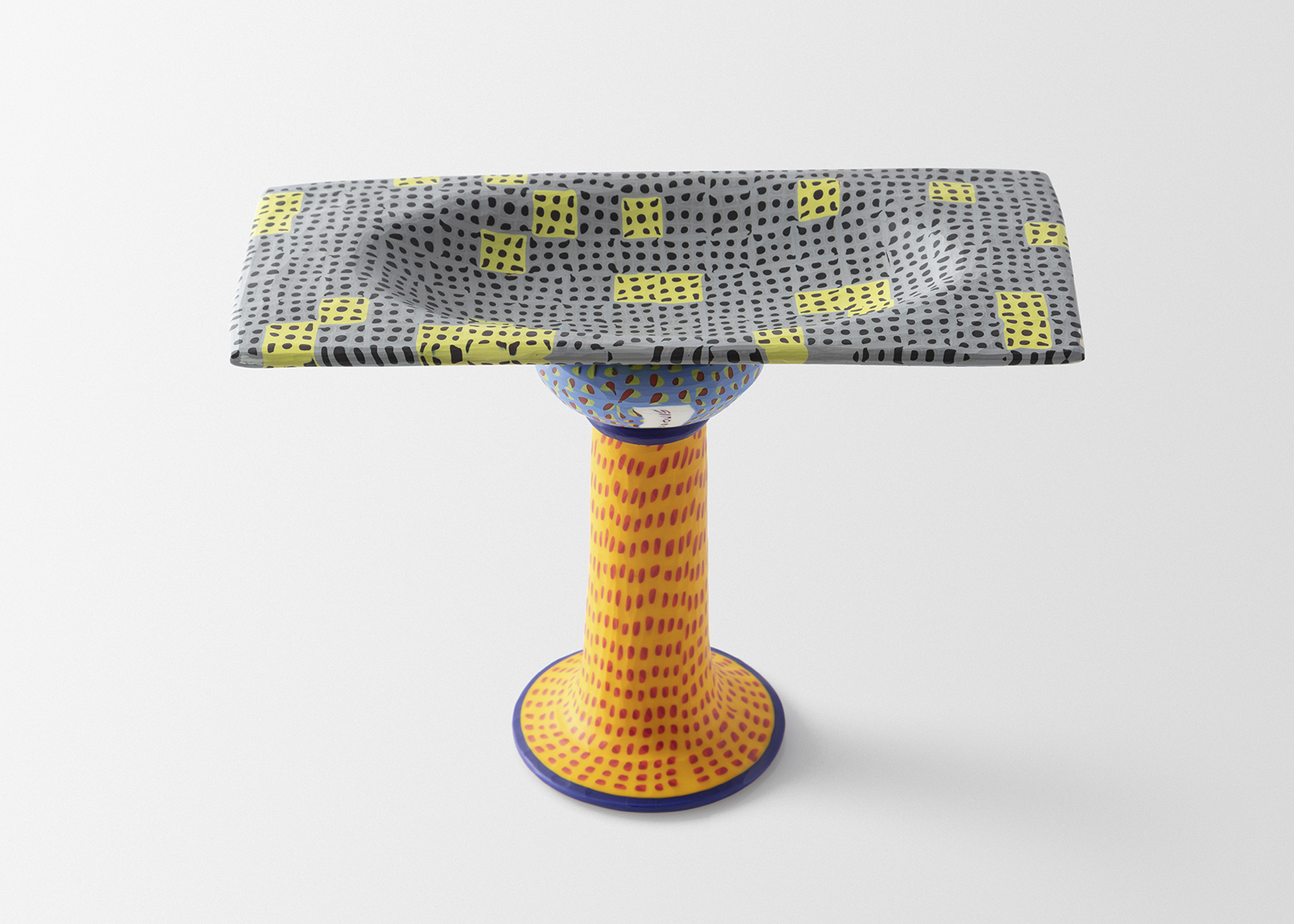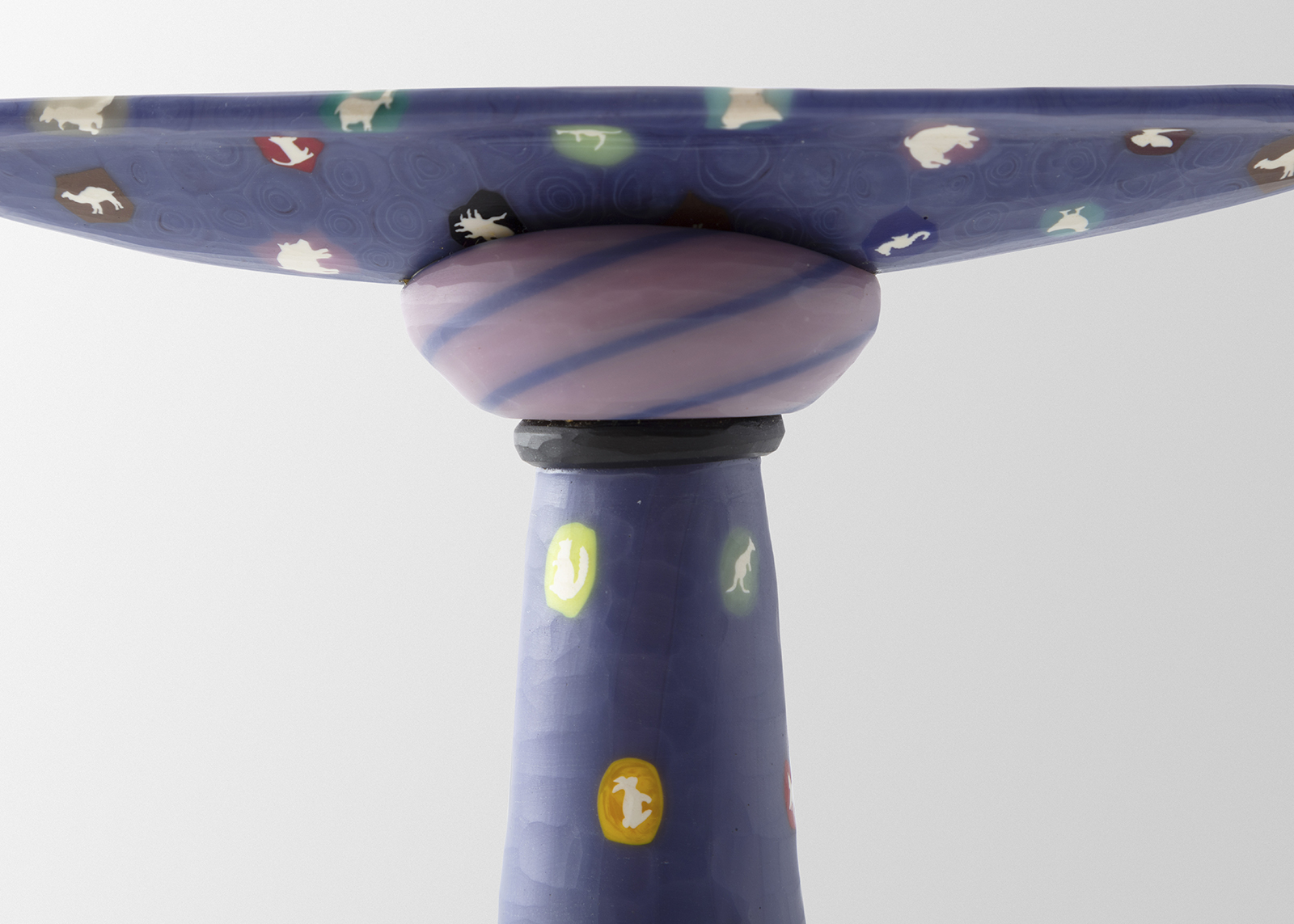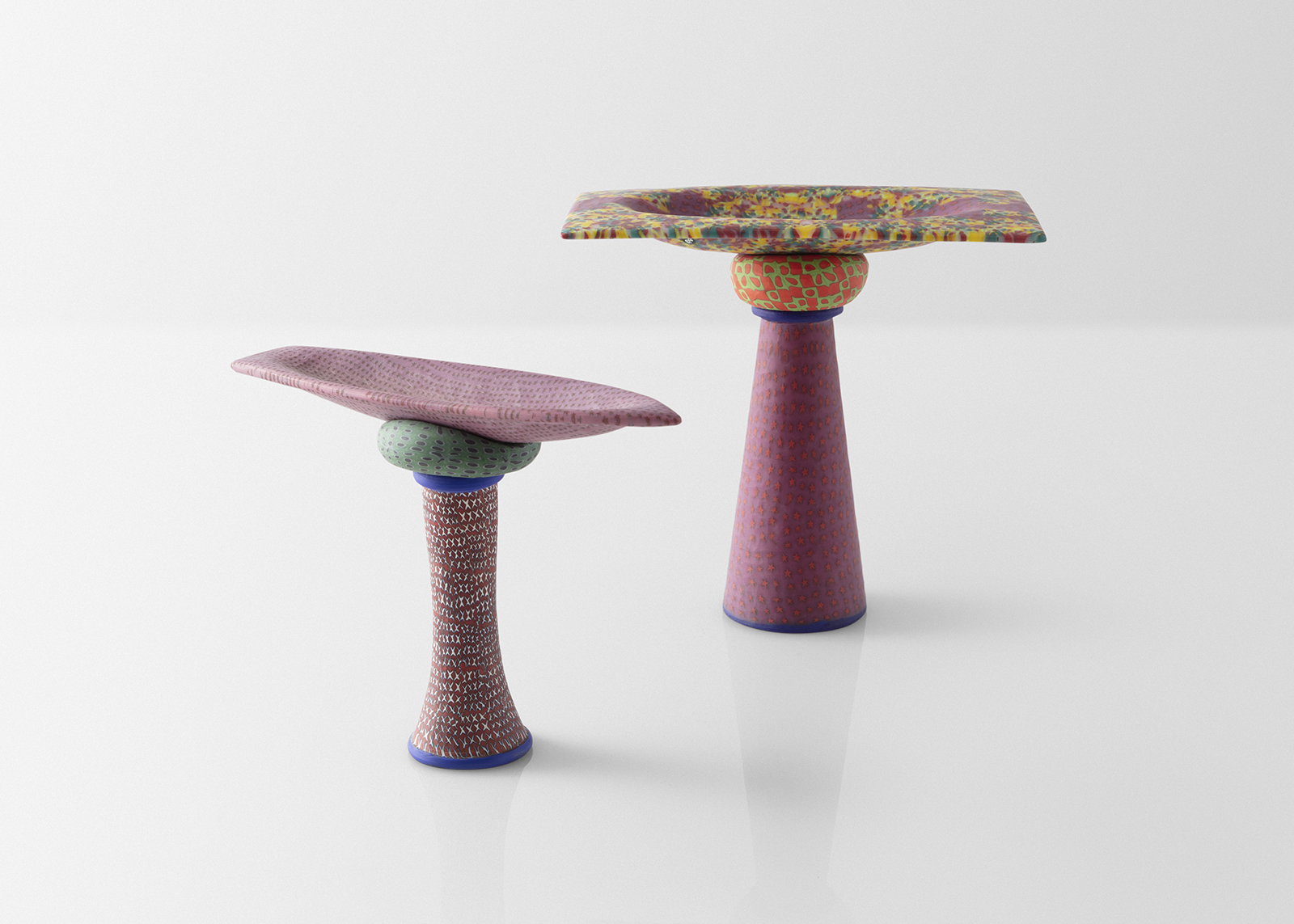Marquiscarpa: Richard Marquis Works 1991-2011
October 5, 2021 to January 8, 2022
64 White Street
When Richard Marquis began to work with murrines in the late 1960s, he introduced the American studio glass movement to an ancient technique, murrine: images and patterns made in glass cane. By the 1990s, Marquis’ mastery of murrines allowed him to pay tribute to Carlo Scarpa—Italy’s most innovative glass designer of the 20th century—in a series of sculptural vessels which reference five thousand years of glassmaking.
In the Marquiscarpa series, we see shallow circular bowls and elongated canoe-like forms elevated on architectural columns, executed in blown and slumped glass murrines. This use of an architectural structure and of glass murrines, a three-thousand-year-old method of making vessels with slices of pre-made glass canes, is a very specific reference to the work of Carlo Scarpa.
Carlo Scarpa was a brilliant architect, but an unusual one. Of his most famous architectural projects, the vast majority were restorations of historical structures. Scarpa became famous for his ability to reframe architectural details and fragments, both preserving and enhancing their appearance using minimalist design and modern materials (concrete, steel, monochrome ceramic tile, etc). This ability to preserve and repurpose historical objects and fragments was a revolutionary approach, one that required a deep understanding of history and a firm grip on the vocabulary of modern architecture.
In similar fashion, Scarpa’s work with glass always referenced the past, but in a fresh, contemporary way. His work with murrines in the 1940s was visually dynamic and complex beyond anything previously achieved, and in the Marquiscarpa series Marquis seems to be taking all of this into account, delivering his own unique commentary on Scarpa’s work and on the history of glassmaking itself.
Marquis’ experience working at the Italian glass manufacturer Venini, in the late 1960s and early 70s, on a Fulbright scholarship exposed him to all the traditional techniques of Muranese glassmaking, of which the blowing and slumping of murrines became his technique of choice. From the 60s onward, Marqius mastered the use of murrines and developed his own imagery and vocabulary which references psychedelia, pop art, traditional design aesthetics and American culture at all levels. His work is satirical, insightful, funny, poetic, uniquely American and, at the same time, universal in its directness of imagery and purpose.
Like Scarpa, Marquis is adept at reframing history, but according to his own aesthetic and intellectual sensibilities. Seeing the canoe and bowl shapes in the Marquiscarpa series, objects executed in murrines and elevated on architectural columns, one can’t help but think that Marquis was engaged in a postmodern exercise of reframing the re-framer, but with a very individual aesthetic and technique. His choice of vessel shapes is also telling: bowls are vessels, but so are boats, and Marquis and Scarpa use both of these shapes with specific intent. Like the elegant vessels of the ancient Phoenicians, Egyptians and Greeks, the Marquiscarpa sculptures have the power to capture our imaginations, gliding across the surface of human perception and culture. – Jim Oliveira
Jim Oliveira and Sara Blumberg founded Glass Past in 1995. They are private dealers and consultants specializing in Italian Glass. Jim is author of the forthcoming book Murano Glass, America and the History of the World
R & Company also opens an exhibition of works by groundbreaking designer Verner Panton on Tuesday, October 5th.


